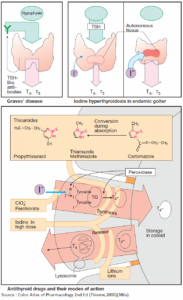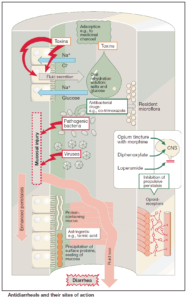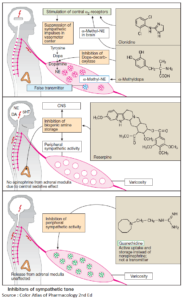During electrical excitation of the cell membrane of heart or smooth muscle, different ionic currents are activated, including an inward Ca2+ current.
The term Calcium (Ca2+) antagonist is applied to drugs that inhibit the influx of Ca2+ ions without affecting inward Na+ or outward K+ currents to a significant degree. Other labels are Ca-entry blocker or Ca-channel blocker.
Therapeutically used Calcium antagonists can be divided into three groups according to their effects on heart and vasculature:
- Dihydropyridine derivatives
- Verapamil and other catamphiphilic Ca2+ antagonists
- T-channel selective blockers
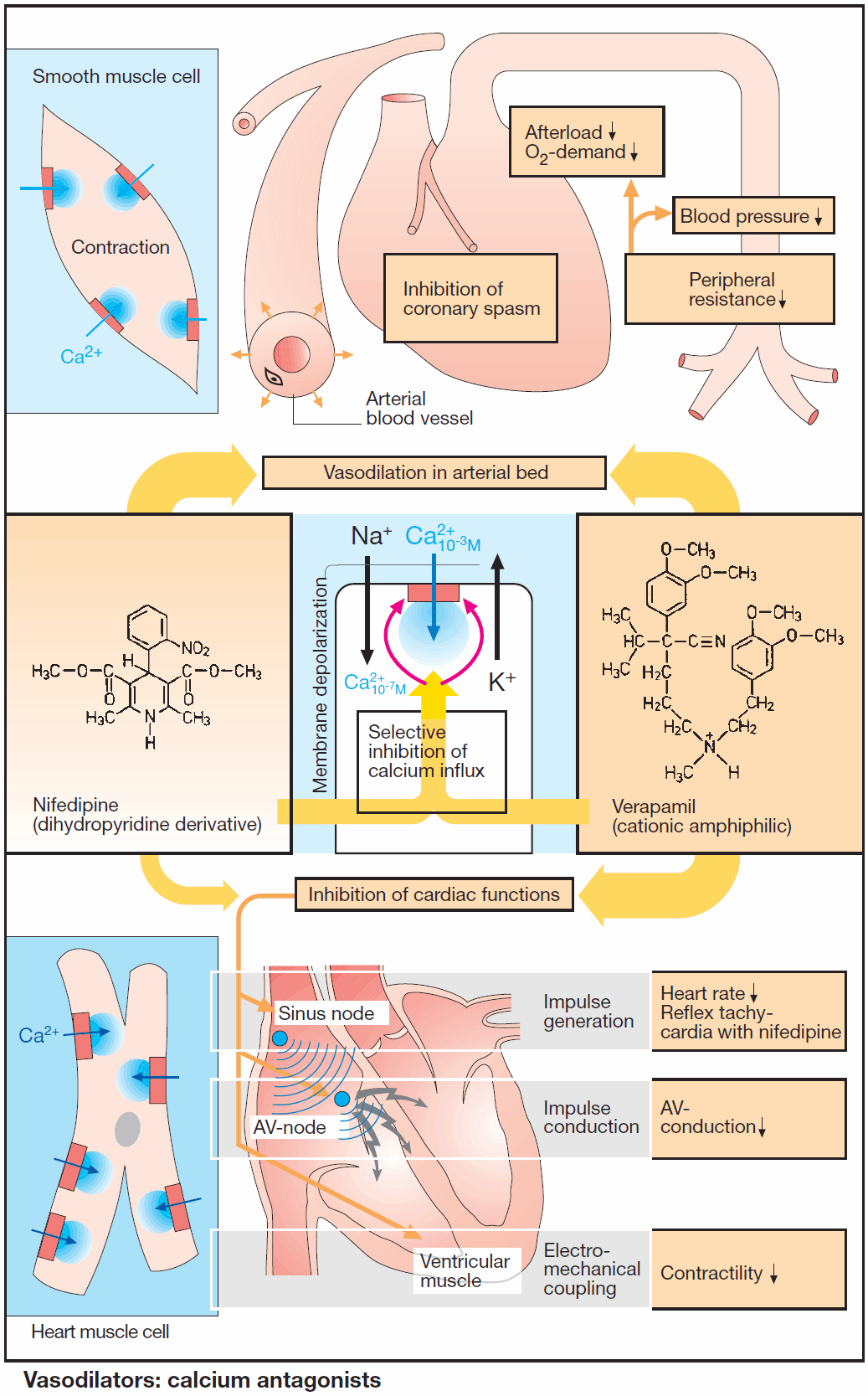
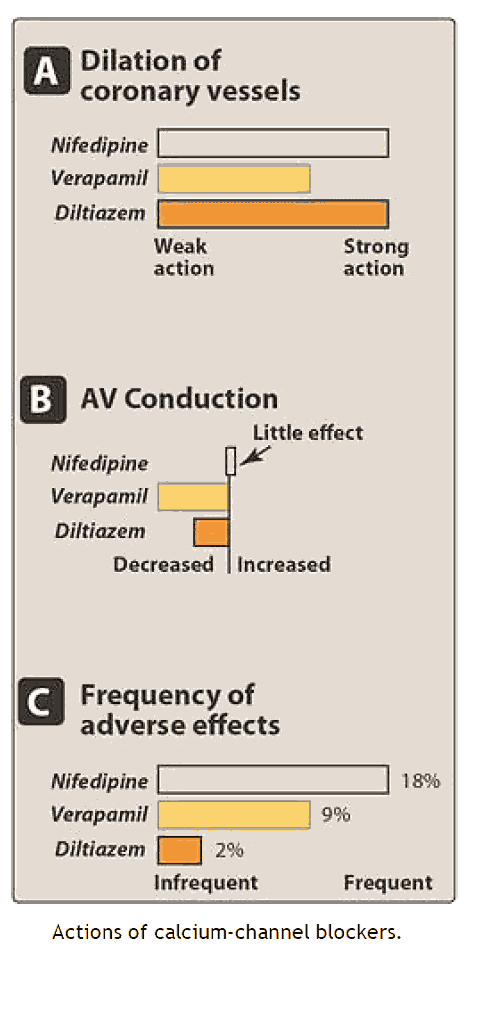
1. Dihydropyridine Derivatives
The dihydropyridines, e.g., nifedipine, are uncharged hydrophobic substances. They induce a relaxation of vascular smooth muscle in arterial beds.
An effect on cardiac function is practically absent at therapeutic dosage. (However, in pharmacological experiments on isolated cardiac muscle preparations a clear negative inotropic effect is demonstrable.) They are thus regarded as vasoselective Calcium antagonists.
Because of the dilatation of resistance vessels, blood pressure falls. Cardiac afterload is diminished and, therefore, also oxygen demand. Spasms of coronary arteries are prevented.
Indications for nifedipine include:
- Angina pectoris
- Hypertension (HTN) – when applied as a sustained release preparation
In angina pectoris, it is effective when given either prophylactically or during acute attacks.
Adverse effects are:
- Palpitation (reflex tachycardia due to hypotension)
- Headache
- Pretibial edema
Nitrendipine and felodipine are used in the treatment of hypertension.
Nimodipine is given prophylactically after subarachnoidal hemorrhage to prevent vasospasms due to depolarization by excess K+ liberated from disintegrating erythrocytes or blockade of NO by free hemoglobin.
2. Verapamil and other catamphiphilic Ca2+ antagonists
Verapamil contains a nitrogen atom bearing a positive charge at physiological pH and thus reprepresents a cationic amphiphilic molecule. It exerts inhibitory effects not only on arterial smooth muscle, but also on heart muscle.
In the heart, Ca2+ inward currents are important in generating depolarization of sinoatrial node cells (impulse generation), in impulse propagation through the AV- junction (atrioventricular conduction), and in electromechanical coupling in the ventricular cardiomyocytes.
Verapamil thus produces negative chrono-, dromo-, and inotropic effects.
Indications of Verapamil:
- Supraventricular tachyarrhythmias. In atrial flutter or fibrillation, it is effective in reducing ventricular rate by virtue of inhibiting AV-conduction
- Prophylaxis of angina pectoris attacks
- Treatment of hypertension
Adverse effects of Verapamil
- bradycardia
- AV-block
- myocardial insufficiency
- constipation
Gallopamil (= methoxyverapamil) is closely related to verapamil in both structure and biological activity.
Diltiazem is a catamphiphilic benzothiazepine derivative with an activity profile resembling that of verapamil.
3. T-channel selective blockers
Calcium channel blockers, such as verapamil and mibefradil, may block both Land T-type Ca2+ channels.
Mibefradil shows relative selectivity for the latter and is devoid of a negative inotropic effect; its therapeutic usefulness is compromised by numerous interactions with other drugs due to inhibition of cytochrome P450-dependent enzymes (CYP 1A2, 2D6 and, especially, 3A4).

